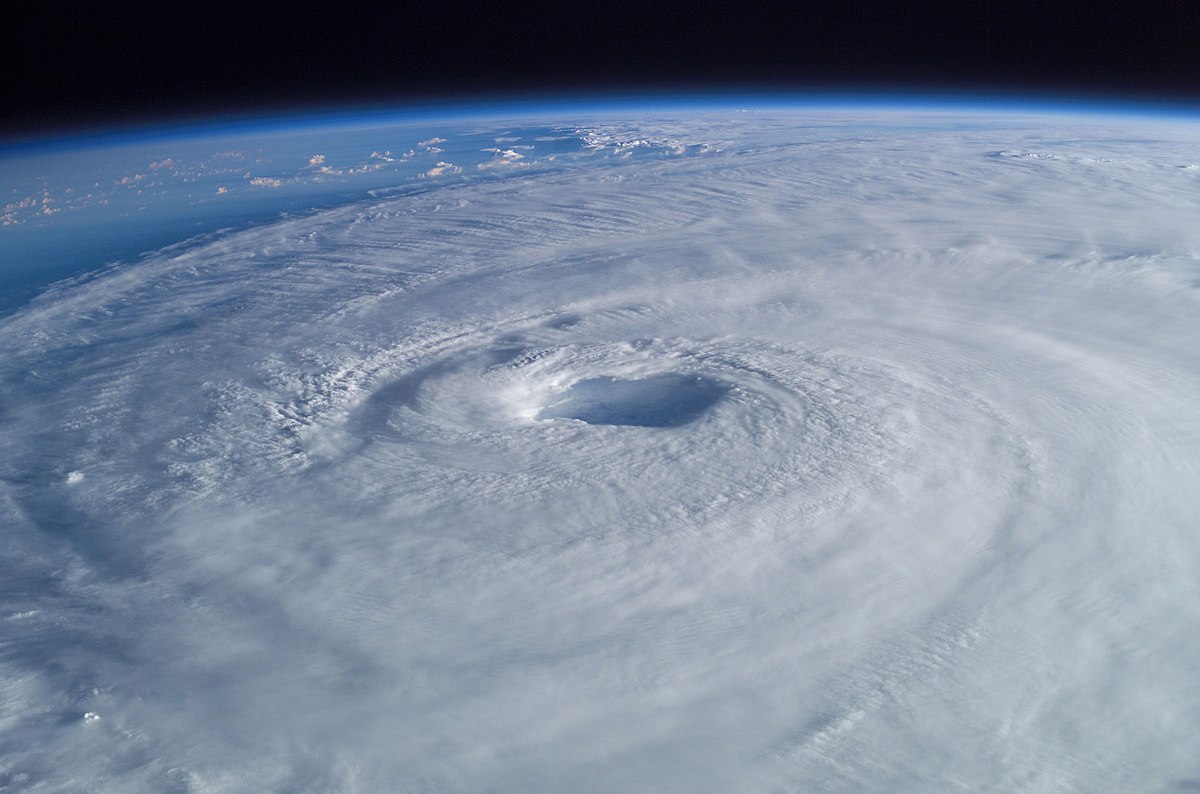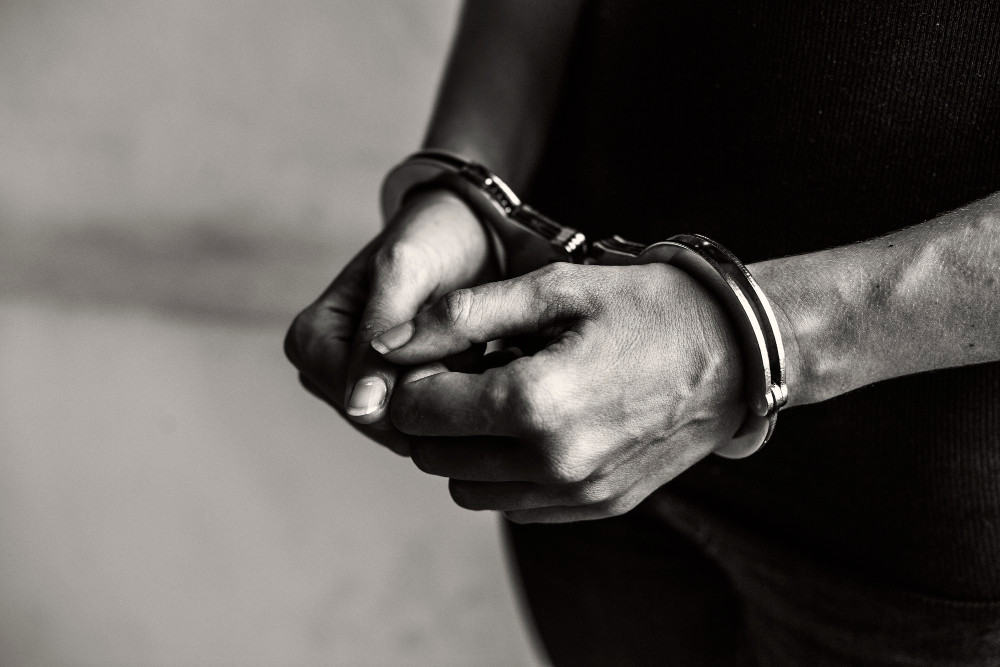- 14 3402-5578
- Rua Hygino Muzy Filho, 737, MARÍLIA - SP
- contato@latinoobservatory.org
 Image courtesy of Mike Trenchard, Earth Sciences & Image Analysis Laboratory, NASA Johnson Space Center.
Image courtesy of Mike Trenchard, Earth Sciences & Image Analysis Laboratory, NASA Johnson Space Center.
On other occasions, Latino Observatory has addressed the issue of the impact of natural disasters on Latino communities. Back in February 2022, we discussed how climate change affects minorities, who are more likely to live in risk areas and have fewer resources to deal with the crisis. Later, in September 2022, we pointed out that an unprecedented study demonstrated that Latinos were impacted by Hurricane Harvey in an unequal manner. In the two years since those posts, extreme weather events have intensified and become more common than they were before. For example, in 2023, Brazil recorded 12 extreme weather events, with “nine of the occurrences being considered ‘unusual’ and two ‘unprecedented’”.
Experts have called the period between May and October in the United States the “Danger Season”, and studies show that this period marks the majority of extreme weather events that occur in the country. By the middle of the 2024 danger season, 99% of the population would have already received some extreme weather warning in the country, according to an assessment by the Union of Concerned Scientists. May was the second most active month in severe weather conditions in the last 20 years, with 2 EF-4 tornadoes, the second worst on the scale. California recorded the fourth largest fire in its history. Floods took over parts of Texas, due to Hurricane Beryl in July, and the East Coast, caused by Tropical Storm Debby. Furthermore, the abnormal warming of the North Atlantic and the transition to La Niña generated what can be considered the worst hurricane season in history, with three hurricanes with great potential to hit the region: Beryl, Helene and Milton.
Méndez, Flores-Haro and Zucker, professors at the School of Social Ecology at the University of California, use the term “slow violence” - used by Rob Nixon, a South African author and professor at the University of Wisconsin-Madison - to define the marginalization of migrants in the context of climate change. For them, slow violence refers to “slow-moving, harmful and deadly harm resulting from human-caused environmental degradation or climate change”.
Furthermore, this type of violence would be characterized by invisibility, that is, most people do not see or care about this type of action. Méndez, Flores-Haro and Zucker also state that undocumented migrants are invisible to “policymakers and disaster relief organizations” and are not considered “worthy victims of disasters”.
These aspects described by the authors can be easily identified in the context of the 2024 crises. Latinos are not only suffering from the severity and frequency of current climate events; the current context is marked by an intensification of anti-immigrant policies. In other words, instead of “slow violence” becoming highlights and concerns for public policymakers, it has been exacerbated, putting the Latino population at greater risk and exposure to disasters.
For example, in 2023, the Ron DeSantis administration in Florida passed Senate Bill 1718 which limited several rights of undocumented migrants. Among the main actions of the Act are: i. requiring hospitals that accept Medicaid to include questions about people’s legal status on their forms; ii. verifying the legal status of workers in companies with 25 or more employees; iii. prohibiting local governments from issuing Identification (ID) Cards to illegal aliens and invalidating ID cards issued in other states; and; iv. criminalizing the intentional transportation of undocumented people. Although the latest measure, which criminalizes the transportation of migrants, was revoked by the judiciary, many undocumentedpeople feared that if they went to shelters during Hurricane Milton, they would risk being deported. In addition, the evacuation also generated fear among Latinos because they feared that if they left Florida, they would not be able to return to the state. There is also a fear of requesting food or sandbags, which protect homes, for fear of being required to have some document.
Also in late September, Hurricane Helene left a deadly trail in the southeastern United States, marked by strong winds, heavy rains and a large area. Tennessee was one of the states affected, recording 4 deaths with flooding being recorded throughout the region. Latino communities across the state have relied on the volunteer efforts of other Hispanics for rescue, support, and assistance. Marlon Espinoza and Daniel López, two workers on a tomato farm that was hit by floodwaters, lost all of their belongings, including food and clothing. They said they expected the storm to come but never imagined the river would rise so quickly, so they had to grab whatever they needed and flee to higher ground.
After the disaster, a group of Latino volunteers arrived to save Espinoza and López, as well as other workers in the area. Upon arriving at the scene, Honduran migrant Pastor Alexis Andino, who was with the volunteers, said: “We want to tell you that what we are doing tonight is the least we can do for our people. It is the least a Hispanic can do for another Hispanic. We thank God that we are alive.”
In another region of the country, in western North Carolina, are the Appalachian Mountains. According to the latest census, 53 Latinos live there, but the actual number may be higher, since many did not respond to the census due to their legal status, in addition to other Latinos who came to the region as temporary harvest workers. There, we do not have information on the real impact of Hurricane Helene. Many families live in trailer parks in low-lying areas, near streams and rivers. The main challenge is finding information in their own language, since many agencies do not use Spanish. This language issue is repeated in the state of Florida, in South Hillsborough County. Ana Lamb, a volunteer committed to the rescue efforts, created a chat a few years ago that received numerous messages reporting the damage from the hurricane and people asking for help.
Following the flooding from Hurricane Helene, six workers, at a plastics plant in Erwin, Tennessee, were missing. Four of the six workers were Mexican-American. On most nights following the hurricane, relatives and friends of the missing gathered outside churches, schools, and supermarkets in the area to hold vigils. Prayers were said in Spanish asking for the workers to be found. Families are now living with doubts, asking, “Why did they go to work? Why didn’t they escape sooner?” Some workers who managed to flee before the floods said the evacuations began too late. According to reports, “some clung to pipes in the backs of trucks for up to six hours as they made frantic 911 calls and said goodbye to loved ones.”
During the preparations for the most recent hurricane, Milton, another case caught the eye. A mother, Lupita Lara, who lives with her family near Orlando, spent a few hours trying to contact one of the city's shelters. She needed a place for her son, who has a disability and needs a respirator to sleep every night. After many attempts, she decided to call the Farmworker Association of Florida (FWAF), a non-profit organization that brings together migrant rural workers in Florida. Even with their support for translation, the shelter said that no place would be guaranteed and that it would be necessary to look for another shelter.
All of the cases reported in this text occurred between September 26 and October 9. Less than 15 days marked the suffering of hundreds of Latino families in different regions of the country. In most of the reports, we identified the difficulty of obtaining information, language and cultural barriers, and negligence as factors that increase the destruction caused by the movements of nature. Thus, we can note in the reports what the authors cited above call “slow violence,” that is, the invisibility imposed on communities that places them in a situation of extreme vulnerability. Furthermore, the pace of this violence has been intensified by rapid climate change and, as in the cases cited, families had little time to recover and already needed to prepare for yet another extreme climate event, worse than the previous one.











